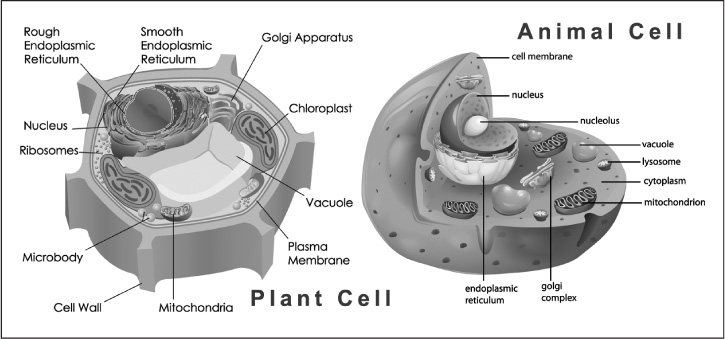Cellular BasicsProkaryotic and Eukaryotic Cells |
What are the differences between prokaryotic and eukaryotic cells? |
In 1937, the French marine biologist Edouard Chatton (1883–1947) first proposed the terms procariotique and eucariotique (French for prokaryotic and eukaryotic, respectively). Prokaryotic, meaning “before nucleus,” was used to describe bacteria, while eukaryotic, meaning “true nucleus,” was used to describe all other cells. Today, the terms are more well defined: eukaryotic cells are much more complex than prokaryotic cells, having compartmentalized interiors and membrane-contained organelles (small structures within cells that perform dedicated functions; for more about organelles, see this chapter) within their cytoplasm. The major feature of a eukaryotic cell is its membrane-bound nucleus—the active part of the cell that contains genetic information; prokaryotic cells do not have a nuclear membrane (the membrane that surrounds the nucleus of the cell).
Characteristic |
Prokaryotic Cells |
Eukaryotic Cells |
Organisms |
Eubacteria and Archaebacteria |
Protista, Fungi, Plantae, Animalia |
Cell size |
Usually 1–10 MGRm across |
Usually 10–100 MGRm across |
Membrane-bound organelles |
No |
Yes |
Ribosomes |
Yes, very small |
Yes, larger |
Type of cell division |
Cell fission |
Mitosis and meiosis |
DNA location |
Nucleoid |
Nucleus |
Membranes |
No internal |
Many |
Cytoskeleton |
No |
Yes |
Metabolism |
Anaerobic or aerobic |
Aerobic |

Plant and animal cells share some attribues, such as cell walls, nuclei, and mitochondria, but they also have differences, such as the chloroplasts that only exist in plant cells.
